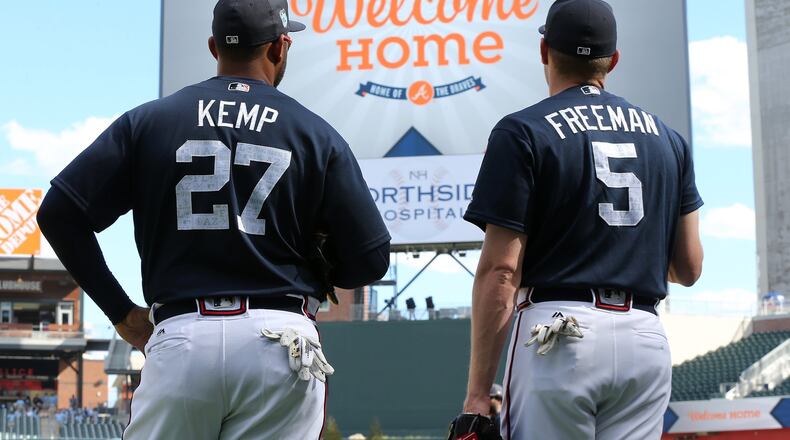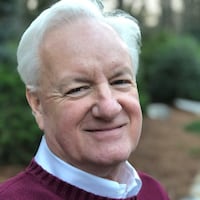The architectural firm that designed SunTrust Park has created 19 of the 30 MLB stadiums. That prompted this question for Joe Spear, a founder of Kansas City-based Populous: Does the new Braves stadium particularly remind you of any of your firm’s other projects?
“No, it doesn’t, really,” Spear said as he looked around SunTrust Park. “Every one of our parks is unique.”
But even if the overall effect is unique, the Braves admit proudly that they borrowed and blended popular features from many stadiums in the design of their new home, which hosted its first game Friday night, an exhibition against the New York Yankees.
“You can see some of the same kind of things here as in other ballparks we have done,” said Spear, Populous’ design principal in charge of the Braves’ project. “But that’s just because that’s what the fans want to buy. They vote with their feet.”
For example, he said, “all of the concourses have a view of the playing field. That’s something you see in some of our other ballparks because the fans love it.”
Timelapse: SunTrust Park opens its gates
Baseball is a sport famously prone to comparisons, and that applies as much to stadiums as to players, teams, eras, you name it.
Braves manager Brian Snitker said SunTrust Park reminds him a bit of the Minnesota Twins’ acclaimed Target Field, in part because of the “cozy feel.”
Braves broadcaster Chip Caray said pieces of the stadium are reminiscent to him of various MLB stadiums.
“The evergreen trees beyond center field, that screams Colorado,” Caray said. “The water feature is going to scream Kansas City. The brick work is like (Chicago’s) Wrigley Field.
“The green seats are a lot like Minnesota. The footprint of the ballpark and the size of it is a lot like Minnesota. The neighborhood (being built) around it is a lot like Wrigley Field and ultimately what St. Louis will be like.”
Others pointed out similarities with various features of MLB stadiums in Philadelphia, San Francisco and San Diego.
Braves officials toured many stadiums early in the design process, identifying elements they wanted to adapt and incorporate along with their own new ideas.
“There are so many pieces of this stadium which are taken directly out of other stadiums’ success factors,” Braves Chairman and CEO Terry McGuirk said.
Spear thinks the signature defining feature of the Braves’ Cobb County stadium will prove to be its interaction with the adjacent 1.5-million-square-foot mixed-use development, The Battery Atlanta.
“We have been telling our clients for 20 years, probably, you ought to be able to control the neighborhood around your ballpark,” Spear said in an interview. “And other major league baseball teams have been able to do that, but these guys (at the Braves) didn’t just control it — they designed it.
“We didn’t design the rest of their development — we just designed the ballpark — but from the start they made it clear they wanted … the ballpark to really harmonize and work well with all this other development activity. … One of the things the Braves wanted was a traditional ballpark that fit that development. We, of course, took that to heart. That’s what you design toward, and I’m just really happy with how that turned out.”
Spear’s design portfolio includes Baltimore’s Oriole Park at Camden Yards, San Francisco’s AT&T Park and Colorado’s Coors Field, among other stadiums.
Some of the features of SunTrust Park that Spear mentioned as important might escape the untrained eye, such as the combination of three colors of brick and the considerable space between the canopy and the top row of seats.
“We left that gap between the sunscreen and the last row of seats because psychologically it feels like there would be more air circulation,” he said. “I think that’s a key feature.”
Another question for Spear as he stood in front of the Braves’ dugout: Do you see anything in the stadium at this point that you would change?
“No, I don’t think so,” he said. “We had a good team (working on the project), and we had great clients, too.”
About the Author
Keep Reading
The Latest
Featured



